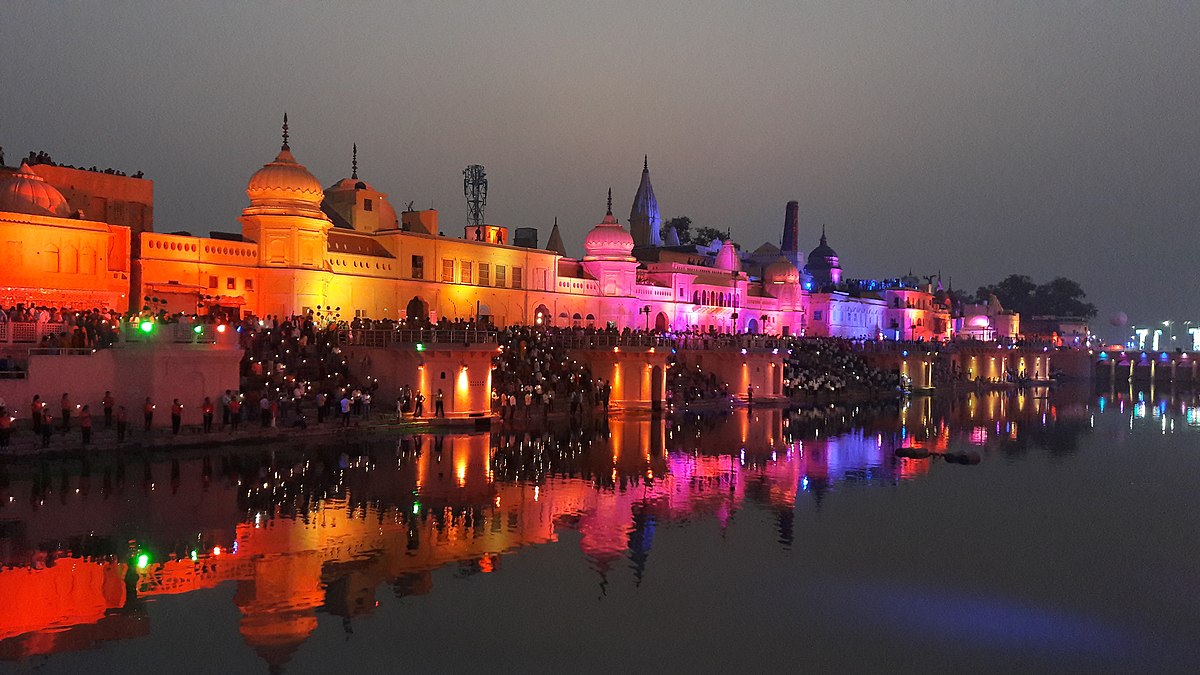Introduction:
Ayodhya, the legendary city immortalized in Hindu mythology and revered by millions, holds a unique place in the cultural and religious fabric of India. Its storied history, intertwined with myth and legend, spans millennia, shaping the collective consciousness of generations. In this blog, we embark on a journey through the rich tapestry of Ayodhya’s history, exploring its ancient origins, its pivotal role in Hinduism, and the enduring legacy of its sacred sites.
1. Mythological Origins:
According to Hindu tradition, Ayodhya is the birthplace of Lord Rama, the seventh avatar of the god Vishnu. The epic Ramayana, attributed to the sage Valmiki, recounts the life and adventures of Rama, including his exile, his battle against the demon king Ravana, and his eventual return to Ayodhya to reclaim his rightful throne. This mythological narrative forms the cornerstone of Ayodhya’s identity and continues to inspire devotion and reverence among millions of Hindus worldwide.
2. Historical Significance:
Beyond its mythical associations, Ayodhya occupies a prominent place in Indian history. Archaeological excavations have revealed traces of human habitation in the region dating back to the 7th century BCE, attesting to its antiquity as a settlement. Over the centuries, Ayodhya emerged as a flourishing center of trade, culture, and religion, attracting pilgrims and travelers from across the Indian subcontinent.
3. Cultural Heritage:
Ayodhya’s cultural heritage is rich and diverse, reflecting the confluence of Hindu, Buddhist, and Jain traditions. The city’s architectural marvels, including temples, shrines, and palaces, bear testament to its illustrious past and enduring spiritual significance. The iconic Hanuman Garhi temple, dedicated to the monkey god Hanuman, and the Kanak Bhawan temple, adorned with intricate carvings and murals, are among the many sacred sites that dot Ayodhya’s landscape.
4. The Babri Masjid-Ram Janmabhoomi Dispute:
In recent decades, Ayodhya has been embroiled in a contentious and protracted legal dispute centered on the Babri Masjid-Ram Janmabhoomi site. The Babri Masjid, a 16th-century mosque built by Mughal emperor Babur, stood on a site believed by Hindus to be the birthplace of Lord Rama. The dispute over the ownership and control of the site ignited communal tensions and led to widespread violence, culminating in the demolition of the mosque in 1992.
5. Legal and Political Ramifications:
The Babri Masjid-Ram Janmabhoomi dispute has had far-reaching legal and political ramifications, shaping the course of Indian politics and society. The issue has been the subject of numerous court cases, culminating in a landmark Supreme Court verdict in 2019 that awarded the disputed site to Hindu litigants for the construction of a Ram temple. The ruling sought to bring closure to decades of legal wrangling and communal strife, although it continues to evoke passionate debate and controversy.
6. Religious Harmony and Reconciliation:
Despite the historical tensions surrounding the Babri Masjid-Ram Janmabhoomi dispute, Ayodhya remains a symbol of religious harmony and coexistence. The city is home to vibrant communities of Hindus, Muslims, and people of other faiths, who continue to live and worship side by side in peace and mutual respect. Efforts to promote interfaith dialogue and reconciliation have gained momentum in recent years, fostering a spirit of unity and understanding among Ayodhya’s diverse inhabitants.
7. Tourism and Pilgrimage:
Ayodhya’s status as a sacred pilgrimage site attracts millions of devotees and tourists from around the world, eager to pay homage to Lord Rama and immerse themselves in the city’s spiritual ambiance. The annual Ram Navami festival, commemorating Rama’s birth, draws throngs of pilgrims who flock to Ayodhya to participate in religious rituals and celebrations. The city’s tourism infrastructure, including hotels, guesthouses, and guided tours, caters to the needs of visitors seeking to explore its cultural heritage and religious significance.
Conclusion:
Ayodhya’s history is a testament to the enduring power of faith, culture, and tradition to shape the destiny of nations and inspire the hearts of humanity. From its mythical origins as the birthplace of Lord Rama to its status as a vibrant pilgrimage site and cultural hub, Ayodhya continues to captivate the imagination and stir the soul. As we reflect on its storied past and contemplate its future, we are reminded of the timeless wisdom and spiritual truths that lie at the heart of this sacred city.






